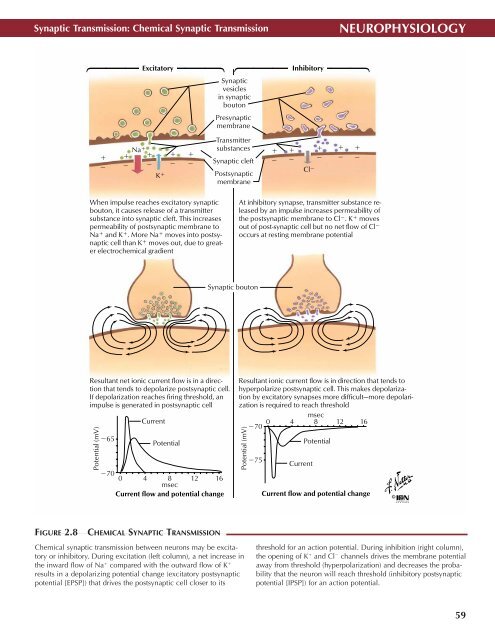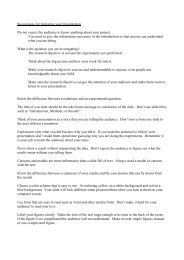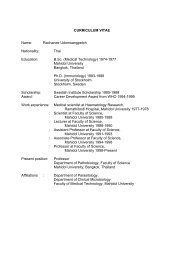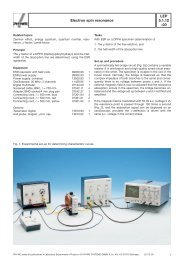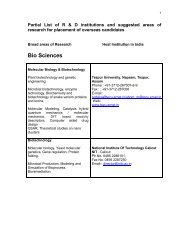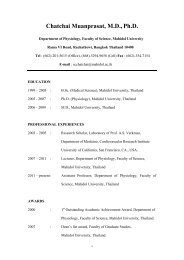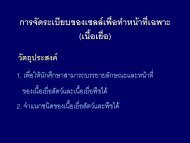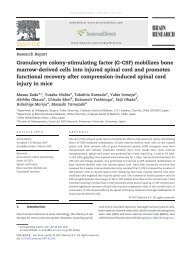Create successful ePaper yourself
Turn your PDF publications into a flip-book with our unique Google optimized e-Paper software.
Synaptic Transmission: Chemical Synaptic Transmission<br />
NEUROPHYSIOLOGY<br />
Excitatory<br />
⎧<br />
⎪⎪⎨⎪⎪⎩<br />
⎧<br />
⎪⎪⎨⎪⎪⎩<br />
Synaptic<br />
vesicles<br />
in synaptic<br />
bouton<br />
Presynaptic<br />
membrane<br />
Inhibitory<br />
<br />
<br />
<br />
<br />
<br />
<br />
Na Current<br />
K <br />
<br />
<br />
<br />
<br />
Transmitter<br />
substances<br />
Synaptic cleft<br />
Postsynaptic<br />
membrane<br />
<br />
<br />
<br />
<br />
<br />
<br />
Cl <br />
<br />
<br />
<br />
<br />
When impulse reaches excitatory synaptic<br />
bouton, it causes release of a transmitter<br />
substance into synaptic cleft. This increases<br />
permeability of postsynaptic membrane to<br />
Na and K . More Na moves into postsynaptic<br />
cell than K moves out, due to greater<br />
electrochemical gradient<br />
At inhibitory synapse, transmitter substance released<br />
by an impulse increases permeability of<br />
the postsynaptic membrane to Cl . K moves<br />
out of post-synaptic cell but no net flow of Cl <br />
occurs at resting membrane potential<br />
Synaptic bouton<br />
Resultant net ionic current flow is in a direction<br />
that tends to depolarize postsynaptic cell.<br />
If depolarization reaches firing threshold, an<br />
impulse is generated in postsynaptic cell<br />
Potential (mV)<br />
65<br />
Potential<br />
70 0 4 8 12 16<br />
msec<br />
Current flow and potential change<br />
Resultant ionic current flow is in direction that tends to<br />
hyperpolarize postsynaptic cell. This makes depolarization<br />
by excitatory synapses more difficult—more depolarization<br />
is required to reach threshold<br />
msec<br />
12 16<br />
75<br />
Current<br />
Potential<br />
Potential (mV)70 0 4 8<br />
Current flow and potential change<br />
©<br />
FIGURE 2.8<br />
CHEMICAL SYNAPTIC TRANSMISSION •<br />
Chemical synaptic transmission between neurons may be excitatory<br />
or inhibitory. During excitation (left column), a net increase in<br />
the inward flow of Na compared with the outward flow of K <br />
results in a depolarizing potential change (excitatory postsynaptic<br />
potential [EPSP]) that drives the postsynaptic cell closer to its<br />
threshold for an action potential. During inhibition (right column),<br />
the opening of K and Cl channels drives the membrane potential<br />
away from threshold (hyperpolarization) and decreases the probability<br />
that the neuron will reach threshold (inhibitory postsynaptic<br />
potential [IPSP]) for an action potential.<br />
59


